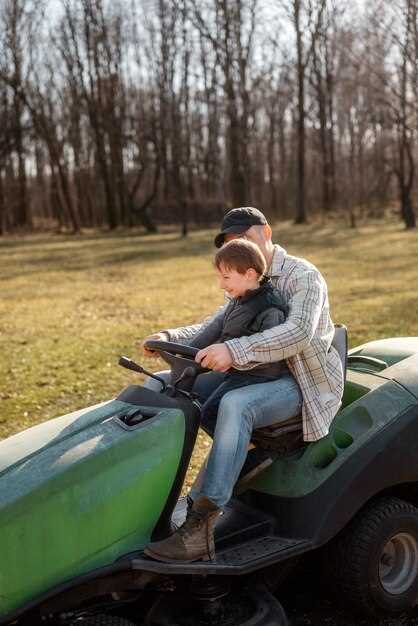
Maintaining the optimal performance of your ATV (All-Terrain Vehicle) involves a keen understanding of its internal system. One of the most critical issues that can arise during operation is overheating. Overheating can lead to severe engine damage, reduced efficiency, and an overall diminished riding experience. Recognizing the symptoms and knowing how to manage overheating promptly can save you time and money in repairs.
Overheating occurs when the engine’s cooling system fails to dissipate heat effectively. This can be due to various reasons, including low coolant levels, a malfunctioning radiator, or even debris blocking airflow. Understanding the underlying causes of overheating is essential for any ATV owner, enabling you to take preventative measures and perform timely interventions. By familiarizing yourself with the signs of overheating, you can ensure that your vehicle remains in excellent condition for all your off-road adventures.
In this article, we will explore practical steps to diagnose and address overheating issues in your ATV. From the importance of regular maintenance to troubleshooting specific components, our focus will be on empowering you with the knowledge to handle this common but critical problem effectively. Whether you are a seasoned rider or a novice, understanding how to manage an overheating ATV is vital for ensuring a safe and enjoyable riding experience.
Identifying Signs of Overheating in Your ATV
Recognizing the early signs of overheating in your ATV is essential for maintaining its performance and longevity. One of the first indicators is a sudden rise in engine temperature, which can often be observed on the temperature gauge. If you notice the needle moving towards the red zone, it is crucial to address the issue immediately.
Another common sign is a decrease in engine power. If your ATV struggles to accelerate or maintain speed, this could be a result of the cooling system being unable to regulate the engine temperature effectively. Pay attention to any unusual sounds, such as knocking or pinging, which can indicate excessive heat or stress within the engine components.
Additionally, check for any coolant leaks. If you see coolant pooling under your ATV or notice a low coolant level in the reservoir, it may signal a problem with the cooling system that could lead to overheating if not resolved promptly. A distinct smell of burning or heated oil can also be a warning sign that your ATV is experiencing elevated temperatures.
Lastly, be aware of steam or smoke emitting from the engine. This is often a definitive sign that your ATV is overheating and requires immediate action to prevent further damage. Regular maintenance and keeping an eye on these signs can help ensure your ATV remains in optimal working condition.
Steps for Cooling Down an Overheated ATV

When your ATV experiences overheating, timely action is essential to prevent severe damage. Start by turning off the engine immediately. This will help stop the overheating process and allow you to assess the situation.
Next, let the ATV sit for a few minutes. This pause allows the engine to cool down naturally. Avoid touching any hot surfaces, as they can cause burns. If you have a temperature gauge, monitor it to ensure it’s dropping.
Afterwards, inspect the coolant levels. Open the coolant reservoir and check if the fluid is below the recommended level. If necessary, add the appropriate coolant mixture to restore the balance. Ensure that you use coolant compatible with your ATV’s specifications.
Once you’ve added coolant, check for any visible leaks in hoses or the radiator. Leaks can contribute to overheating and must be addressed promptly. Tighten any loose connections and replace damaged components if needed.
After confirming everything is in order, start the engine again and let it idle for a few minutes. Watch the temperature gauge closely; a gradual increase should indicate normal functioning. If it begins to rise again, turn off the engine and reassess the problem.
Finally, keep in mind that preventive maintenance is crucial. Regularly check the cooling system, change the coolant, and ensure airflow to the radiator is unobstructed. By adhering to these steps, you can effectively handle overheating issues and maintain your ATV’s performance.
Maintaining Your ATV’s Cooling System for Prevention

Proper maintenance of your ATV’s cooling system is essential to prevent overheating and ensure optimal performance. Regular checks and careful attention can greatly extend the life of your vehicle.
1. Regular Fluid Checks: Frequently inspect the coolant levels in your ATV. Low coolant can lead to inefficiencies and overheating. Ensure that the coolant is suitable for your specific ATV model and replace it as per the manufacturer’s recommendations.
2. Inspect Hoses and Connections: Examine all hoses connected to the cooling system for any signs of wear, cracks, or leaks. Replace any damaged hoses immediately to maintain proper fluid flow and prevent overheating.
3. Clean the Radiator: Dirt and debris can obstruct airflow to the radiator, reducing its efficiency. Regularly clean the radiator fins and ensure there are no blockages that could impede the cooling process.
4. Check the Thermostat: The thermostat regulates the temperature of your ATV’s engine. If it malfunctions, it may not allow coolant to flow properly. Test the thermostat and replace it if necessary to maintain effective temperature management.
5. Monitor Engine Temperature: Keep an eye on the engine temperature gauge while riding. If you notice any abnormalities, it may indicate issues within the cooling system. Address any discrepancies immediately to prevent further damage.
6. Schedule Professional Maintenance: Periodic check-ups by a professional can help identify hidden issues within your ATV’s cooling system. Regular service will ensure all components are functioning efficiently, helping to prevent future overheating problems.
By proactively maintaining your ATV’s cooling system, you can significantly reduce the risk of overheating, ensuring a safer and more enjoyable riding experience.
 Skip to the content
Skip to the content 